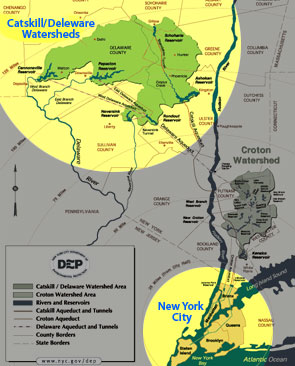Stimulating a Cleaner Environment
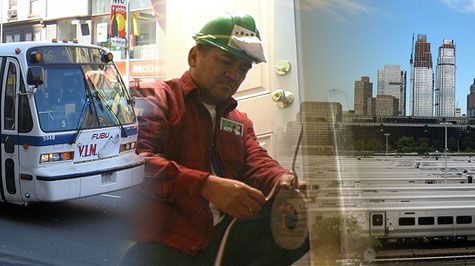
and create new rail projects.
Last month, President Barack Obama signed the American Recovery and Reinvestment Act of 2009, otherwise known as the "stimulus package." This new law includes $463 billion in new spending, as well as $326 billion in tax cuts that aim to create more than 3.5 million jobs nationwide.
While most reports have focused on the job creation and economic development aspects of the bill, this law can be viewed through an energy, infrastructure and environmental lens. From that perspective, the stimulus package is one of the most significant energy and environmental laws in a long time -- thanks to roughly $80 billion in new investments that will lead to greater energy efficiency; increased use of solar, wind and other alternative energy sources; more funding for urban and suburban transit; additional money for modernizing our highways and bridges; new investments in high-speed rail; cleaner water; and upgraded environmental infrastructure. New York State stands to get a substantial portion of this spending, which will help public and private efforts to create a cleaner and more energy-efficient city and state.
Energy, Infrastructure and the Environment
The New York Times editorial board correctly noted that, if the energy and environmental provisions were separated into a stand-alone bill, it would be "the biggest energy bill in history," thanks to the new spending and tax incentives for energy and infrastructure investments. Overall, the plan will more than triple the amount of federal spending on clean-energy programs.
Major energy portions include:
* A three-year extension of the wind power tax credit, which would have expired at the end of this year, and the tax credit for geothermal and biomass renewable energy projects.
* $4.5 billion in direct spending to modernize the electricity grid with so-called "smart-grid" technologies;
* $6.3 billion in grants to the states for investments in energy efficiency and clean energy, plus $4.5 billion to increase the energy efficiency of federal government buildings;
* $6 billion in loan guarantees for renewable energy systems, biofuel projects and electric-power transmission facilities;
* $2 billion in loans to build advanced batteries and components for advanced vehicles, such as plug-in hybrid-electric cars;
* $5 billion to weatherize the homes of as many as 1 million low-income people;
* $3.4 billion appropriated to the Department of Energy for fossil energy research and development, such as storing carbon dioxide underground at coal power plants;
* A tax credit of between $2,500 and $5,000 for purchase of plug-in hybrid-electric vehicles (capped at 200,000 vehicles);
* $300 million to retrofit old, dirty diesel engines with pollution-cutting filters and other devices.
What Will New York Gain?
New York's environment will be a great beneficiary of this stimulus package. Given the senior role of several of our elected officials in Congress, that's not too surprising. Sen. Charles Schumer is the third-ranking Democrat in the Senate, Harlem Rep. Charles Rangel chairs the powerful House Ways & Means Committee, and Rep. Jerry Nadler is senior member of the House Transportation Committee and a perennial champion for New York's infrastructure investments. To fill out the team of powerful New York congressional members, Rep. Nita Lowey and Rep. Jose Serrano must be included, thanks to their senior seats on the influential House Appropriations Committee. All played key roles in ensuring that New York's environment would benefit from the stimulus plan.
Overall, New York is expected to receive $24.6 billion in funding from the act. But this doesn't begin to tell the full story.
Mass transit tops the list of environmental benefits for New York from the stimulus package. This funding could not come at a better time, given the Albany debate about the best way to save the Metropolitan Transportation Authority's subway, bus and train service and minimize any fare hikes.
The stimulus law will deliver more than $1.2 billion to help meet New York's mass transit needs. For the first time, Washington is sending our state more money for transit than for highway spending. Formula funds set in the bill will deliver at least $967 million for our existing transit system, plus another $254 million for investments to modernize our rail systems. Together, these transit funds exceed the $1.1 billion in federal stimulus funding for our highways. Plus, given our aging infrastructure, high proportion of the nation's rail passengers and over-crowded airports, it is reasonable to hope that New York will receive some of the new federal funding for rail projects ($9.3 billion), discretionary surface transportation projects ($1.5 billion) or airport improvements ($1.3 billion).
Energy efficiency and renewable energy in New York also will get a major boost. Overall, the law will invest $16.8 billion in energy efficiency and renewable energy projects and technologies. New York should reap significant benefits from these funds. For example, the state should receive $126 million from the State Energy Program, which provides grants to states and provides funding to state energy offices for renewable energy and energy efficiency projects. The state also will add another $31 million in energy efficiency and conservation block grants. Together, this creates a pool of $157 million that should help New York's budding alternative energy industries.
New York's low-income residents should also benefit from the energy and environmental provisions of the stimulus package. Indeed, the new law reserves $404 million for weatherization projects to help low-income New Yorkers. These funds will help reduce the carbon footprints of their homes, while also helping low-income New Yorkers withstand future energy price increases.
New York's water infrastructure will receive critical investments, thanks to the stimulus package. The state will receive $435 million from the Clean Water State Revolving Fund and another $85 million from the Drinking Water State Revolving Fund. Along with a recent court decision upholding the federal Environmental Protection Agency's approval of the city's plan to keep its drinking water clean and safe, these funds should benefit all New Yorkers who use our tap water.
Last but certainly not least, the bill contains $300 million to retrofit old, dirty diesel buses, trucks or other diesel engines. To a certain extent, this is a going-away present to New York from Secretary of State Hillary Clinton. Back in 2005, then-Sen. Clinton partnered with Sens. George Voinovich of Ohio and Thomas Carper of Delaware to pass the Diesel Emissions Reduction Act, a law that authorized up to $200 million per year to clean up dirty diesel engines. Unfortunately, less then $50 million was appropriated last year. In a little-noticed corner of the bill, the diesel retrofit program received $300 million for the next two years. Given that every dollar spent to reduce diesel pollution yields more than $15 in health benefits, this may be one of the greatest bargains of the environmental world.
Rich Kassel is a senior attorney at the Natural Resources Defense Council, where he focuses on urban air pollution and transportation issues. He also chairs the Tri-State Transportation Campaign, a regional transportation advocacy organization and blogs on a variety of environmental issues on the NRDC switchboard.
Mixing Gas and Water: Drilling in the City's Watershed.
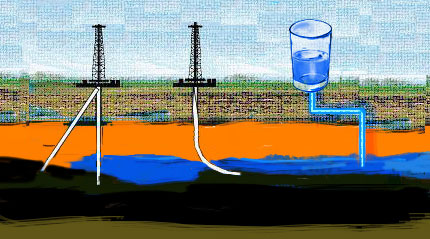
Correction added at end of story (1/16/09)
Turn on the tap and New Yorkers get completely unfiltered H2O, flowing from the upstate streams and rivers to faucets from the Bronx to Brooklyn.
Since 1993, the U. S. Environmental Protection Agency has exempted New York City from its filtration requirement, making it only one of a handful of major U. S. cities that does not have to filter its water before letting its citizens gulp. The city's system is the largest unfiltered water delivery system in the country.
Now, some New York City officials worry that anticipated gas drilling will jeopardize the water supply of more than 9 million people in the city and several upstate counties. Gas producers want to drill into the Marcellus Shale formation, part of which lies upstate. They would then inject millions of gallons of water treated with chemicals in order to extract what experts believe could be trillions of cubic feet of natural gas.
Proponents of the drilling say tapping the state's deep reserves of natural gas could bring a bonanza of royalties, jobs and tax revenues to cash-strapped upstate communities and help ease the state's budget crisis. Officials closer to New York City, however, say compromising the quality of the city's drinking water is too high a price to pay. They want the state to ban gas drilling in the watershed.
City Councilmember Jim Gennaro, who chairs the Environmental Protection Committee, has sounded the alarm about the potential cost of filtering the city's water. Gennaro has cautioned fellow committee members -- and anyone else who will listen -- that a filtration system could boast a price tag in the billions.
"What the people of the City of New York, I fear, are looking at is a $20 billion consequence to this 'drill baby drill' policy," Gennaro said.
The Energy Rush
Gas production in the Empire State is nothing new. The first gas well opened in the 19th century, according to the New York State Department of Environmental Conservation, the agency that regulates oil and gas exploration and production.
Geologists have known for decades that potentially huge amounts of gas -- as much as 500 trillion cubic feet, according to one study -- are trapped in the Marcellus Shale formation, a succession of narrow slabs of subsurface rock that stretches through Appalachia from West Virginia to Ohio and New York's Southern Tier. About 30 counties in New York State sit over the formation, which is as much as 7,000 feet below ground in some places.
Because of the depth of the gas and the high density of the rock, traditional drilling and extraction methods have proved to be costly and inefficient. In the last few years, however, technological improvements in horizontal drilling and hydrologic fracturing, or "fracking," have made it more affordable to get the gas out.
As gas prices climbed and construction of the Millennium Pipelinefrom Cornng to Ramapo neared completion, fracking became more economically viable. Early 2008 saw a feeding frenzy of sorts among gas producers as agents for independent producers like Chesapeake Appalachia LLC, Chesapeake Appalachia LLC Fortuna Energy, Inc. and EOG Resources, Inc. rushed to secure drilling leases from upstate landowners and drilling permits from the Department of Environmental Conservation.
Today there are some 13,000 oil and gas wells in the state. According to the Department of Environmental Conservation, a dozen gas wells in Schulyer, Steuben, Chemung, Livingston and Allegany counties produced 19.7 million cubic feet of gas in 2007. In the last year, the state agency approved nearly 50 new well applications, according to the department.
The recent drop in gas prices and the economic crisis may have served to cool the gas rush for the time being. According to an October article in Oil and Gas Journal, 14 different operators had filed 77 permit applications for gas wells in the shale formation by the end of July, and the state approved 48 of the permits. As of October, only nine different operators had drilled 31 wells. No operators have requested or received -- a permit to drill in New York City’s watershed.
A rise in prices could spur renewed demand. Before gas prices backed off of their staggering high this summer, industry officials had projected that there would eventually be between 25,000 and 50,000 drilling pads upstate.
"This will be the environmental issue of the next decade, and it will be the biggest thing to hit the northeast since strip mining took apart West Virginia and Eastern Kentucky," said Al Appleton, a former city commissioner for the Department of Environmental Protection. "The scale of the potential damage is that great."
Getting the Gas
To extract the gas, the operator - typically an independent exploration and production company -- drills a conventional cement-cased vertical well bore into the earth down to the level of the shale.
The bore then turns 45-degrees to run horizontally through the center of the shale slab, which ranges in thickness from 50 to 100 feet. Fresh water, and lots of it, is mixed with chemicals and forced through the well bore and into the shale. The water causes the rock to fracture, allowing the gas to flow back into the bore for capture at the wellhead.
Hydro-fracking has been used for about 30 years, and while it has grown more reliable and affordable, it also requires up to five times more water per well than it did in decades past. A typical "frac job" in 1992 used less than 100,000 gallons of water, according to the state Department of Environmental Conservation; today the same job would require between a million and 5 million gallons.
Environmental Concerns
Hydro-fracking's biggest perceived threat to the environment comes from the chemicals that are used in frac fluids. Gas producers have been historically close-mouthed about what actually goes into the well bore, claiming the mix is a confidential trade secret. Foes of hydro-fracking, though, say they have identified by analysis more than 100 chemical compounds believed to be used in the process across the country. The list includes some highly toxic and carcinogenic compounds like benzene and formaldehyde, and ethylene glycol, as well as hydrochloric acid, N,N-dimethyl formamide, Gluteraldehyde and bleach.
The use of such chemicals creates an unacceptable risk to public health, in the view of Appleton, currently an environmental consultant and a senior fellow at City University of New York's Institute for Urban Systems. Under his leadership in the early 1990s, the city's Department of Environmental Protection launched an ambitious watershed protection program and convinced the federal Environmental Protection Agency to exempt it from filtering its water. In Appleton's opinion, the only reliable way to ensure that our drinking water supply remains safe is to ban gas drilling in the watershed.
"You've got to have a failsafe system. Once these pollutants are in the water they're very hard to get out," he said. "Standard filtration procedures don't get them out, and standard industrial toxic waste treatments, which have never been done on a scale like this before, [are] highly expensive and they're not 100 percent reliable."
There are a number of ways for toxins to find their way into the drinking water collection system, according to Appleton. Some percentage of fracking fluid is never recovered from the shale and instead remains in the ground where it can migrate to aquifers, the natural surface and below surface channels that move the groundwater to streams, rivers and reservoirs. Lax regulations or careless operations in the handling, storage and disposal of recovered frac fluid also pose a contamination risk.
The gas industry downplays the hazards. A report by one industry consultant - also a consultant to the state environmental department - points out that some of the chemicals used in fracking are common chemicals found in everyday household products and are heavily dliuted before being injected into the shale.
Not in New York
Opponents of hydro-fracking point to groundwater contamination from drilling operations in states including Colorado and New Mexico, but state environment commissioner Alexander "Pete" Grannis said New York has stricter standards and that his agency won't let the same mistakes be made.
"While I can't account for the environmental protections in those locales, I can tell you that what may have happened in those places -- where drilling and production fluids were improperly handled, where unlined permanent waste disposal pits were allowed, and where the disposal method was evaporation -- has not happened, and will not happen, in New York State," Grannis told members of the state Assembly's environmental committee this fall.
HIs agency is currently working to revise its generic environmental impact statement to address the issues raised by the newer hydro-fracking process, It wants to identify and address potential effects on the environment. To that end, the agency held public hearings upstate in the fall to hear concerns from interested residents, local governments, and environmental advocates.
It held no sessions in New York City, despite requests from the city's legislative delegation and members of the City Council. Instead, Grannis assured the city in a September letter that his office would accept any written comments that the city wished to send to Albany, "as we undertake to fully protect the city's watershed, while meeting our obligations to move forward with the permitting process for this type of drilling."
That same month, Grannis appeared before Gennaro's environmental protection committee to say the agency would not grant permits for any projects that endanger the city's water supply.
Avoiding Filtration
All of New York City, except for Jamaica in Queens, gets its drinking water from two upstate watersheds: The watershed west of the Hudson River and the Croton watershed is east of the Hudson. Combined, they cover about 2,000 acres, from the Delaware River Basin to the Connecticut border.
The Catskill collection area, more than twice the size of the Croton system, lies wholly within the boundaries of the Marcelus and provides 90 percent of New York City’s drinking water -- unfiltered. The Croton watershed, on the other hand, is some 30 miles beyond the reach of the Marcellus play. And while the Croton water is currently unfiltered, the city is building a filtration plantfor that water supply, having lost its filtration exemption in 2006 due to poor water quality. The project has been plagued by delays and cost overruns, and city officials are not keen to build another plant for the Catskills water.
Furthermore, city officials say, many of the aqueducts, tunnels and shafts that help collect and carry the water downstate from the Catskills are on land over the Marcellus Shale. They are concerned that parts of that infrastructure, particularly those that operate under high pressure, could be seriously damaged by any inadvertent penetration during gas drilling.
Gennaro, a former city geologist who worked under Appleton, was involved in the city's efforts to get its first filtration exemption in 1993. Since then, he said, the city has spent billions of dollars to protect its water sources -- maintaining the aqueducts, tunnels and reservoirs and acquiring land to forestall development. Now he worries that gas drilling will jeopardize the remaining exemption.
Gennaro recently asked the Environmental Protection Agency for a determination on whether gas drilling in the watershed would jeopardize the exemption. Although the agency has not yet responded, Gennaro believes the answer is "yes" and hopes a statement from the EPA to that effect will prop up his call for a ban on drilling in the watersehd.
If the city loses its exemption, a filtration system hefty enough to handle chemical contamination could place a monumental strain on the city's shrinking resources. Ten years ago, Gennaro said, the city estimated the cost of a bacteriological filtration system at around $10 billion. Now, he said, a system that could handle chemical contamination would easily cost twice that.
For its part, the city's Department of Environmental Protection has not joined in the call for a ban on drilling in the watershed, much to Gennaro's consternation. A July letter to the state by the city's former environmental chief, Emily Lloyd, asked for a one-mile buffer zone around components of the city’s water supply infrastructure -- reservoirs, tunnels, aqueducts and shafts -- but stopped far short of asking outright for a no-drill zone encompassing the entire Catskill watershed.
Three months later, the department’s Deputy Commissioner Paul Rush told a panel of the New York State Assembly that the city might modify its position on watershed drilling, depending on a forthcoming report by a consultant, but did not suggest that the city might ultimately support a ban.
More recently, in formal comments filed with the state in response to its preliminary inquiry, the city administration urged the state’ s environment agency to closely evaluate the possible environmental effects on the entire watershed, not just the infrastructure, noting, "Impacts do not need to be within close proximity to a reservoir or water supply infrastructure to negatively impact the water supply."
Gennaro is clearly frustrated with what he sees as the city’s weak response. He called out the department’s acting commissioner, Steven Lawitts, at his committee’s hearing in December, saying that the Bloomberg administration should have started from the presumption that drilling in the watershed should be prohibited.
Gennaro reminded Lawitts that the department had taken a much harder line against a proposed private golf course development in the Catskills in 2004, out of concern for the watershed. He then scolded the agency for not taking the same "vigorous approach" against the state's stand on drilling.
"The city is arguably up against a very tough foe in this case. Maybe it doesn't believe it can prevail in that kind of matchup and is settling for playing this game by the state's rules. I think that's an abdication," Gennaro told Lawitts. "This is our watershed, we have to protect it, the state doesn't care to the same degree that we care, and we have to be leading the charge on that."
Councilmember Peter Vallone Jr., also on the committee, suggested that the ctiy should at least demand financial safeguards from the state, so that if drilling causes the city to lose its filtration exemption, the state would pay for the costly new system.
"It's our water supply, but we're allowing the state to make the decision as to where the drilling is allowed," Vallone said. "If there is no guarantee from the state that they will be responsible for the ramifications of their decision, then the state shouldn't make that decision. We here in the City of New York should make that decision."
Lawitts defended his agency, saying it lacked expertise in the issues surrounding hydro-fracking, but would have a more definitive position once the consultant’s work is concluded. That is slated for sometime this spring, in time for the city to respond to the state’s draft environmental guidelines.
Appleton predicts that the city will eventually come around to his view, that no risk to drinking water is acceptable. "The suggestion that we need to bend over backward for the state to accommodate natural gas drilling is ludicrous," Appleton said. "I have a lot of confidence in the science that at the end of the debate there's only one way to do this: preclude it in the watershed. If it's done right, a lot of areas are going to be off limits, end of story."
This article originally stated that gas wells in five upstate counties produced 19.7 trillion cubic feet of gas in 2007. The correct number is 19.7 million. The copy has been corrected.
A New Name for Our Premier Waterway

With the Triborough Bridge now known as the R.F.K. Bridge, New York City is evidently in a re-naming mood. May I suggest that we finally lend a proper name to the East River?
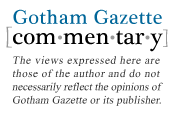
The indigenous name for the waterway is murky. The two most credible candidates, Pawkatuck and Muscouta, describe the course as "an estuary with a waterfall" or a "marshy place," respectively, according to Algonquin scholar Evan Pritchard, author of Native New Yorkers: The Legacy of the Algonquin People of New York. The East River never boasted waterfalls, but a treacherous rocky whitewater section was blasted open in the 19th century with the then-largest controlled explosions in history. The marshes we eradicated more quietly, smothered by landfill or poisoned by pollution. While it's important to remember our history, neither Native American name captures the character of the East River today.
Early Dutch explorers bypassed indigenous names for our waterways, tagging them instead with convenient shorthand to frame their territorial claims: the North River, South River and East River. While the former two became known as the Hudson River and Delaware River, the East River remains stuck with a placeholder name.
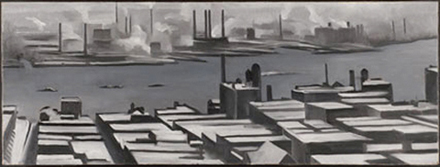
Photo from the Frances Lehman Loeb Art Center, Vassar College
Correcting a Misnomer
This even though the East River is not a river at all. This 16-mile long strait links the Upper Bay of the harbor with Long Island Sound. Unlike a river, it has no fresh water source. The flow between Manhattan, Long Island and the mainland simply rises and falls and sloshes back and forth each day with ocean tides. It's true that the Hudson River is also tidal up to Albany and not a true river within our city. The Hudson River's source, however, is the fresh waters of Lake Tear in the Clouds. The lower Hudson River is an estuary, an arm of the sea that includes the strait we call the East River.
Renaming the East River has had several near misses. Some navigators called the passage the Sound River, for its eastern connection. Hell Gate, that dynamited central bend of the waterway between Randalls Island and Astoria, was named through an Anglicization of the Dutch hellegat, meaning "bright passage." That name, a bit of a double entendre perhaps, could have referred to the strait's entire length.
When our forbearers renamed the North, or Mauritius, River for Henry Hudson's historic 1609 voyage aboard the Half Moon, they might have extended a similar honor to Adriaen Block for the East River. Block's ship, the Onrust, explored the East River just five years after Hudson. The ship, the first trans-Atlantic vessel built in the Americas, was also the first vessel with a European crew to sail through from Manhattan to the Long Island Sound. Indeed, with this year marking the 400th anniversary of Dutch exploration of our harbor, a "Block River" movement might surge.
The City's Waterway

Instead let's rename the East River for the outrageous metropolis it nurtures. For ourselves. After all, this is our premier waterway. Each bank of it is a borough, with Brooklyn and Queens on one side and the Bronx and Manhattan on the other. Our most stately bridges span it, and on its bed lay our darkest fears and fantasies of disappearance. Ghosts glide over its surface, from the thousands of patriots who died of starvation and disease aboard prison ships on Wallabout Bay during the Revolutionary War to the over 1,000 lost in the General Slocum ferry disaster of 1904.
The strait carries our lore, like the story of Ehrich Weiss, the sickly teenager who swam its turbulent waters to build up his strength and who became the Great Houdini. The infamous pirate Captain William Kidd lived a Manhattan gentleman's life in view of the bustling East River piers while smuggling through Cripplebush, or Williamsburg, Brooklyn. Moby Dick begins with a walk from "Corlears Hook to Coenties Slip, and from thence, by Whitehall northward." Georgia O'Keeffepainted the East River with the focus she brought more famously to the desert. By contrast, the Hudson River is shared by New Jersey and a horde of counties and towns up north. It is they who are celebrated in the Hudson River's stories and paintings, not us.
The East River, like New York City, is far less dirty and dangerous than it once was. But it remains a roiling place of restless energy - only recently its currents sheered off the blades of electric turbines meant to harness it. Like our city of late, it lures dreamers into even the most daunting conditions; divers still descend in hopes of finding gold from the HMS Hussar, claimed by Hell Gate in 1779. Today sailors, paddlers, anglers, and swimmers are once again discovering that its beauty provides a new way to love New York City.
This water pass is ours, and it is us. Call it the Gotham Strait.
Erik Baard is a writer whose family has worked New York Harbor for generations on tugs, barges and in marine construction, along with some rum running. He founded the LIC Community Boathouse to provide free kayaking on the East River, co-wrote a book of historic images of the waterway and is working to start a World Boatbuilding Museum. His blog is at www.naturecalendar.com.
